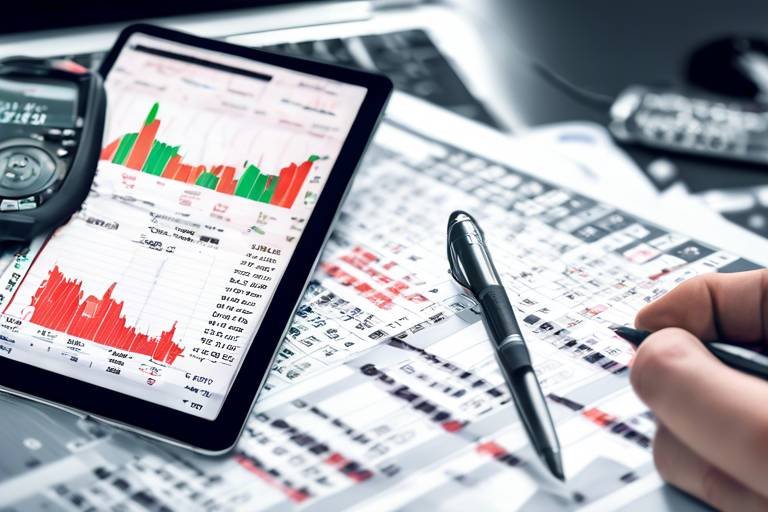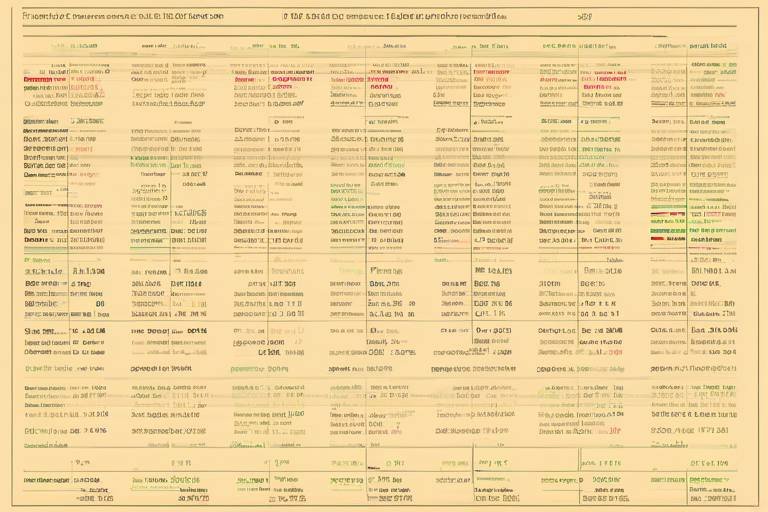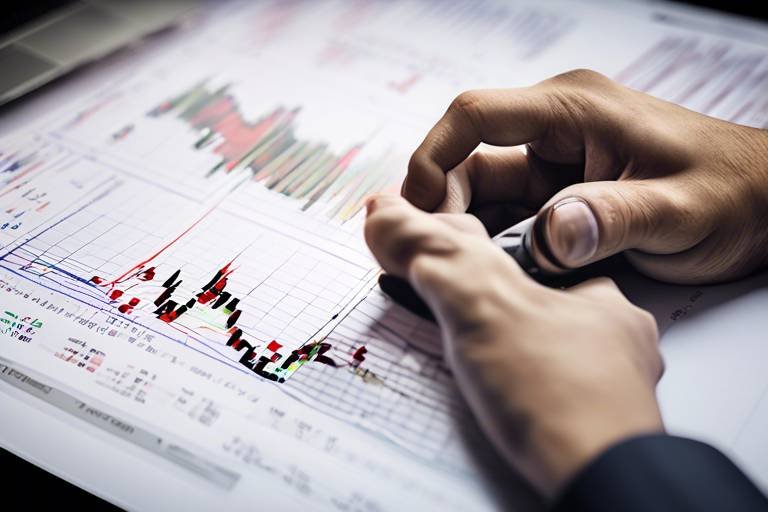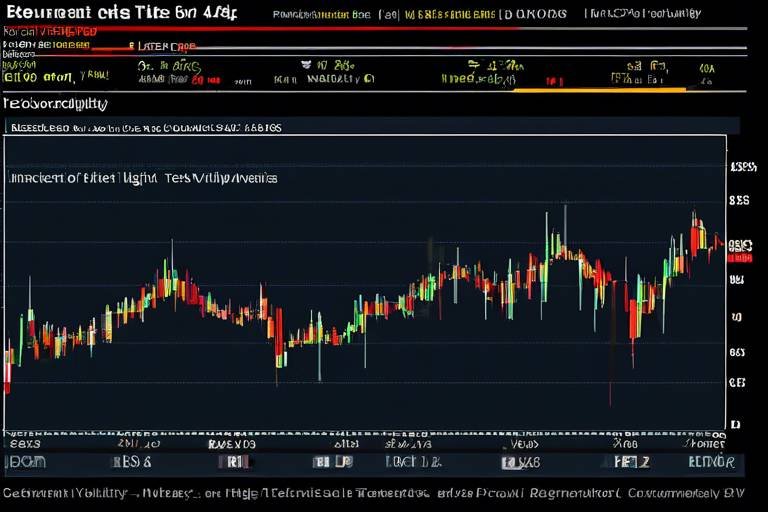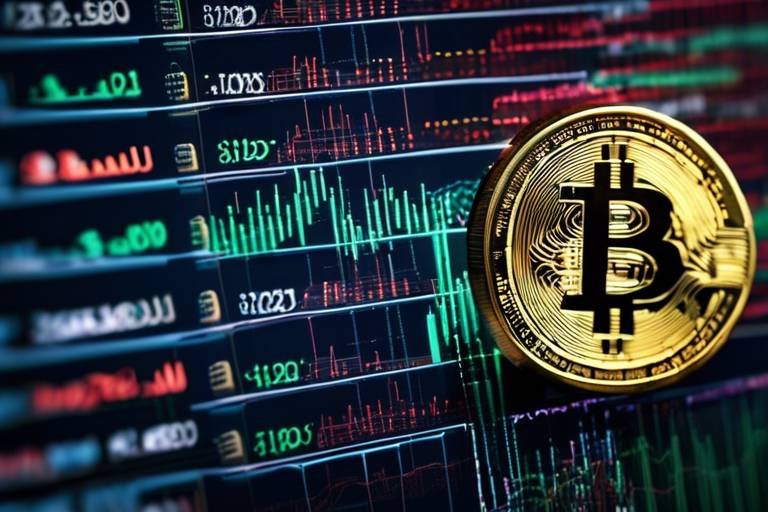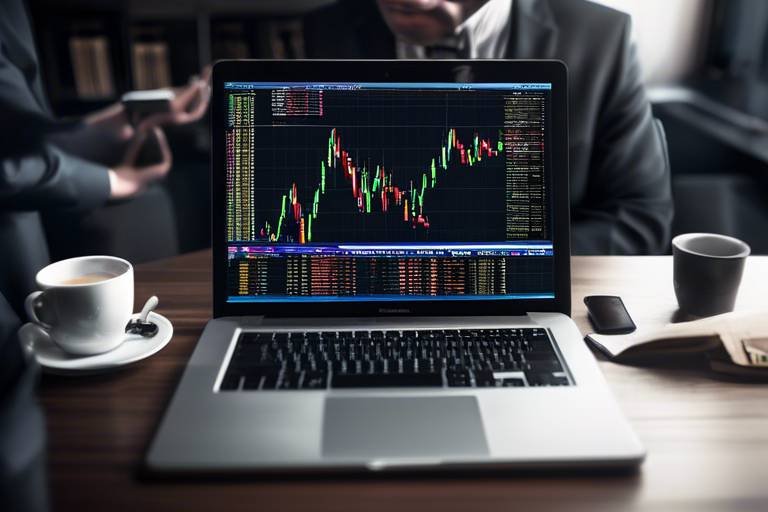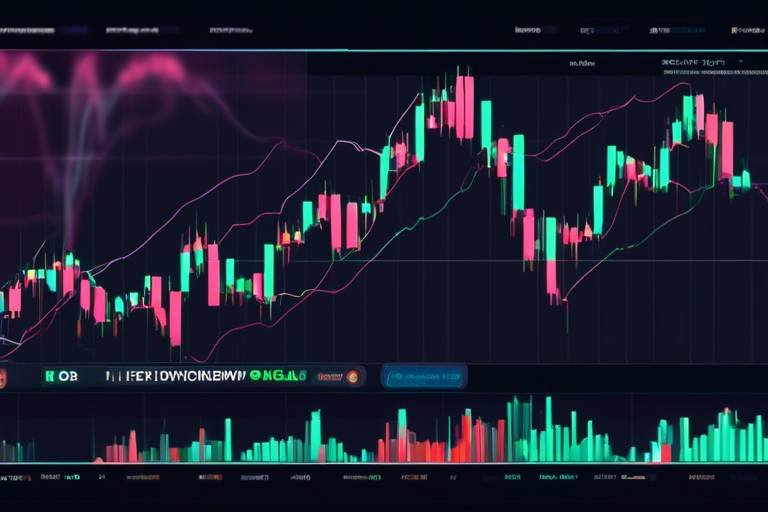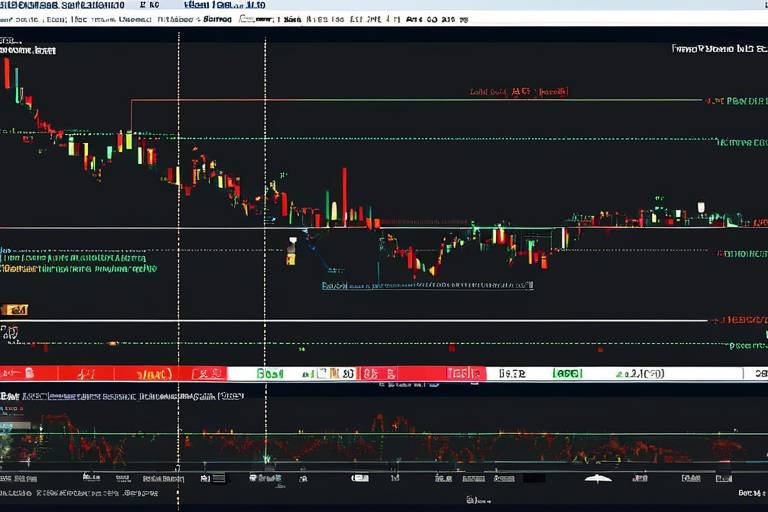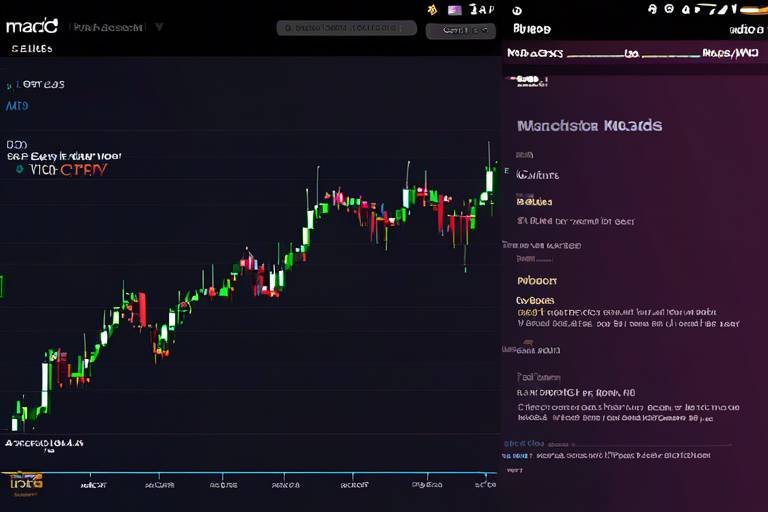How to Analyze Economic Indicators for Crypto Trading
In the fast-paced world of cryptocurrency trading, making informed decisions can feel like navigating a minefield. With prices fluctuating wildly, traders often find themselves asking, "What can I rely on to guide my choices?" The answer lies in understanding economic indicators. These indicators serve as vital signposts that can help traders anticipate market trends and make strategic moves. In this article, we'll dive deep into what economic indicators are, their significance in the crypto landscape, and how to effectively analyze them for optimal trading outcomes.
So, what exactly are economic indicators? Simply put, they are statistics that provide insight into the economic performance of a country. These indicators can be categorized into three main types: leading, lagging, and coincident indicators. Each type offers unique insights that can be crucial for traders looking to understand market dynamics. For example, leading indicators, like consumer confidence, can forecast future economic activity, while lagging indicators, such as unemployment rates, confirm trends after they occur. Understanding these indicators is essential for any trader aiming to grasp the nuances of the cryptocurrency market.
When it comes to trading cryptocurrencies, not all economic indicators are created equal. Some hold more weight than others, and it's crucial to keep an eye on these key indicators:
- Gross Domestic Product (GDP)
- Unemployment Rates
- Inflation
These indicators can have a direct impact on cryptocurrency prices, influencing investor sentiment and market trends. Let's take a closer look at each one.
Gross Domestic Product, or GDP, measures the total economic output of a country. It's like the heartbeat of the economy, reflecting how well it is performing. When GDP is on the rise, it often signals a robust economy, which can lead to increased investor confidence. For crypto traders, understanding GDP fluctuations can be a game-changer. A growing GDP might indicate a favorable environment for investments, including cryptocurrencies, while a declining GDP could lead to market caution.
Imagine you're at a party, and the vibe is electric because everyone is talking about their recent successes. That's what a growing GDP does for investor sentiment—it creates a buzz! When GDP rises, investors are more likely to take risks, which can drive demand for cryptocurrencies. Conversely, a stagnant or declining GDP can create a sense of unease, making investors more hesitant to dive into the crypto waters.
Reading GDP reports can feel like deciphering a foreign language. However, breaking them down into manageable parts can make it easier. Look for:
- Quarterly growth rates
- Year-over-year comparisons
- Sector performance
By focusing on these elements, you can better understand how GDP changes might affect your trading strategies in the crypto space.
Unemployment rates are another critical economic indicator that can provide insights into consumer spending power. High unemployment typically means less disposable income, which can negatively impact cryptocurrency demand. Conversely, low unemployment usually signals a healthy economy where consumers are more likely to invest in assets, including cryptocurrencies.
Inflation is like a silent thief that erodes purchasing power over time. When inflation rises, the value of money decreases, which can lead to changes in investment strategies. For crypto traders, understanding inflation trends is vital. If inflation is expected to rise, investors might flock to cryptocurrencies as a hedge against declining purchasing power, potentially driving up prices.
To effectively analyze inflation data, keep an eye on key metrics such as the Consumer Price Index (CPI) and the Producer Price Index (PPI). These indicators can provide a clearer picture of inflation trends and help you gauge how they might influence your trading decisions in the crypto market.
Lastly, central banks play a pivotal role in economic stability. Their monetary policies can significantly influence cryptocurrencies. For instance, if a central bank decides to lower interest rates, it could lead to increased borrowing and spending, boosting cryptocurrency demand. Traders should stay informed about central bank announcements and policy changes to make effective trading decisions.
Q: What are economic indicators?
A: Economic indicators are statistics that provide insight into the economic performance of a country, helping traders understand market dynamics.
Q: Why are GDP and unemployment rates important for crypto trading?
A: GDP indicates economic growth, while unemployment rates reflect consumer spending power, both of which can influence cryptocurrency demand and prices.
Q: How does inflation affect cryptocurrency investments?
A: Inflation erodes purchasing power, leading investors to seek assets like cryptocurrencies as a hedge, which can drive up demand and prices.

Understanding Economic Indicators
Economic indicators are like the heartbeat of a nation’s economy, providing essential statistics that reflect its performance and health. These indicators serve as crucial tools for traders, especially in the volatile world of cryptocurrency. Just as a doctor checks vital signs to assess a patient's well-being, traders analyze these economic metrics to gauge market conditions and make informed decisions. By understanding these indicators, traders can better anticipate market movements and adjust their strategies accordingly.
There are various types of economic indicators, and they can generally be categorized into three main groups: leading, lagging, and coincident indicators. Leading indicators provide foresight into future economic activity; they can signal upcoming changes in the economy before they occur. On the other hand, lagging indicators reflect past performance and confirm trends that have already been established. Lastly, coincident indicators move in tandem with the economy, providing real-time insights into its current state. Traders should pay attention to all these types, as they can collectively paint a comprehensive picture of economic conditions.
When it comes to cryptocurrency trading, the relevance of these indicators cannot be overstated. For instance, a sudden spike in unemployment rates or a drop in GDP can send shockwaves through the markets, affecting investor sentiment and, consequently, cryptocurrency prices. Understanding how these indicators interact with the crypto landscape is essential for anyone looking to navigate this complex trading environment successfully.
Moreover, the significance of these indicators extends beyond mere statistics; they can influence investor behavior and market psychology. For example, if economic indicators suggest a recession, investors might pull back from riskier assets like cryptocurrencies, leading to price declines. Conversely, positive indicators can foster a sense of optimism, driving demand for digital currencies. This interplay between economic indicators and market sentiment is crucial for traders to understand, as it can lead to profitable opportunities or significant losses.
In summary, grasping the nuances of economic indicators is vital for traders in the crypto space. By staying informed about these metrics, they can make more educated decisions, anticipate market shifts, and ultimately enhance their trading strategies. In the following sections, we will delve deeper into specific indicators like GDP, unemployment rates, and inflation, exploring their direct impact on cryptocurrency prices and trading strategies.

Key Economic Indicators to Watch
When it comes to crypto trading, understanding the landscape of economic indicators is crucial. These indicators serve as the pulse of the economy, providing insights that can significantly influence the cryptocurrency market. As a trader, you need to keep your finger on the pulse of these indicators, as they can help you make informed decisions about when to buy, sell, or hold your assets. Let's dive into some of the most critical economic indicators that can impact your trading strategies.
Among the myriad indicators, a few stand out due to their direct correlation with cryptocurrency prices. These include:
- Gross Domestic Product (GDP)
- Unemployment Rates
- Inflation Rates
Each of these indicators provides valuable information about the economic environment, and understanding them can give you an edge in your trading activities. For instance, GDP reflects the overall economic health of a country, while unemployment rates indicate consumer spending power. On the other hand, inflation rates can signal changes in purchasing power, which can directly impact how cryptocurrencies are valued.
Now, let’s break down how these indicators can affect your trading decisions:
The GDP is a comprehensive measure of a nation's overall economic activity. When GDP is on the rise, it often suggests that the economy is doing well, which can boost investor confidence. For crypto traders, a growing GDP can lead to increased investment in cryptocurrencies as people feel more secure in their financial situations. Conversely, a declining GDP may signal economic troubles, leading to reduced investment in riskier assets like cryptocurrencies.
Investor sentiment is a powerful force in the crypto market. A positive GDP report can act like a green light for investors, encouraging them to pour money into cryptocurrencies. On the flip side, if GDP reports show a contraction, it can trigger panic selling, leading to price drops in the crypto market. Understanding this relationship can help traders anticipate market movements and adjust their strategies accordingly.
GDP reports can be complex, filled with jargon and numbers that can be overwhelming. However, breaking down these reports into digestible pieces can help you make better trading decisions. Look for trends over time, compare them with previous quarters, and consider how they align with other economic indicators. This holistic approach can provide a clearer picture of the market's direction.
Unemployment rates are another vital indicator to watch. They provide insights into the health of the job market and, by extension, the economy. High unemployment rates often correlate with lower consumer spending, which can negatively impact the demand for cryptocurrencies. Conversely, declining unemployment rates typically indicate a robust economy, which can bolster confidence in cryptocurrency investments.
Inflation is a double-edged sword in the world of finance. While a moderate level of inflation can signify a growing economy, excessive inflation can erode purchasing power, making it a critical factor for traders to monitor. When inflation rates rise, investors may turn to cryptocurrencies as a hedge against inflation, driving prices up. Understanding how to read inflation trends can help you position your investments more strategically.
When analyzing inflation data, look for trends and patterns rather than focusing solely on individual reports. A consistent rise in inflation may indicate that it's time to reassess your crypto portfolio. Additionally, consider the broader economic context—how do inflation rates compare to historical data? Are central banks taking action to combat inflation? These factors can influence market sentiment and, ultimately, your trading strategy.
Central banks wield significant power over economic stability through their monetary policies. Interest rates, quantitative easing, and other measures can create ripples across financial markets, including cryptocurrencies. For traders, staying updated on central bank announcements and policy changes is crucial. A shift in policy can lead to immediate changes in investor sentiment, affecting cryptocurrency prices.
In conclusion, keeping an eye on these key economic indicators can provide valuable insights that help you navigate the often volatile world of crypto trading. By understanding how GDP, unemployment rates, inflation, and central bank policies impact the market, you can make more informed decisions and potentially enhance your trading success.
Q: How often should I check economic indicators for crypto trading?
A: It's wise to monitor economic indicators regularly, especially around major reports and announcements. Keeping an eye on trends can help you make timely trading decisions.
Q: Can economic indicators predict cryptocurrency prices?
A: While they can provide insights into market trends, no indicator can predict prices with certainty. It’s essential to use them as part of a broader trading strategy.
Q: What other factors should I consider when trading cryptocurrencies?
A: In addition to economic indicators, consider market sentiment, technological developments, and regulatory news, as they can also significantly affect cryptocurrency prices.

Gross Domestic Product (GDP)
The is often referred to as the heartbeat of a nation's economy. It measures the total value of all goods and services produced over a specific time period and serves as a broad indicator of economic health. For crypto traders, understanding GDP is not just about numbers; it’s about grasping the underlying economic narrative that can influence cryptocurrency prices. Think of GDP as a mirror reflecting the economic activity of a country, and when that reflection shows growth, it can spark a wave of investor confidence.
When GDP is on the rise, it typically signals that businesses are thriving, consumers are spending, and overall economic conditions are favorable. This positive sentiment can lead to increased investments in various assets, including cryptocurrencies. Conversely, when GDP shrinks, it can indicate economic trouble, leading to a decrease in consumer confidence and a subsequent drop in crypto investments. So, how can traders leverage this information? By keeping an eye on GDP trends and reports, they can make more informed decisions about when to enter or exit the market.
Imagine the economy as a giant roller coaster. When the GDP is climbing, it’s like the roller coaster going up—excitement builds, and investors are more likely to take risks, including investing in cryptocurrencies. On the flip side, when GDP falls, it’s akin to that heart-stopping drop on the coaster, which can leave investors feeling queasy and hesitant to invest. A growing GDP typically boosts investor confidence, which can lead to a surge in crypto prices as more people jump into the market, hoping to capitalize on potential gains.
GDP reports can sometimes feel like reading a foreign language, filled with jargon and complex statistics. However, breaking them down into simpler terms can provide valuable insights for traders. Here’s how to interpret these reports effectively:
- Look for Growth Rates: A positive growth rate indicates economic expansion, while a negative rate can signal contraction.
- Compare Year-over-Year Changes: Analyzing how GDP changes over the years can help identify long-term trends.
- Watch for Revisions: Initial GDP figures are often revised, so staying updated on these changes is crucial.
By understanding these aspects, traders can better anticipate market movements and adjust their strategies accordingly. For instance, if a GDP report shows unexpected growth, traders might consider increasing their crypto holdings, while a disappointing report could prompt them to reassess their positions.

How GDP Affects Investor Sentiment
The relationship between Gross Domestic Product (GDP) and investor sentiment is a fascinating one, and understanding it can be a game-changer for crypto traders. When GDP is on the rise, it often signals a healthy economy, which in turn boosts investor confidence. Think of it this way: when the economy is thriving, people feel more secure in their financial situations, and they are more likely to invest in riskier assets like cryptocurrencies. This is akin to a gardener nurturing a plant; when the conditions are right, the plant flourishes, just like investments do in a strong economy.
Conversely, a declining GDP can lead to a sense of uncertainty and fear among investors. In such times, many individuals might pull back on their investments, opting for safer, more stable options. This shift can create a ripple effect in the crypto market, causing prices to drop as demand wanes. It's essential for traders to monitor GDP trends closely, as these fluctuations can provide critical insights into potential market movements.
To further illustrate this point, consider the following table that outlines how different GDP trends can influence investor sentiment:
| GDP Trend | Investor Sentiment | Potential Impact on Crypto |
|---|---|---|
| Rising GDP | Positive | Increased investment in cryptocurrencies |
| Stable GDP | Neutral | Steady interest, cautious investments |
| Declining GDP | Negative | Reduced investment, potential sell-off |
Understanding these dynamics is crucial for traders looking to capitalize on market opportunities. By keeping an eye on GDP reports and interpreting them correctly, traders can better gauge overall market sentiment and adjust their strategies accordingly. For instance, if a trader notices a consistent rise in GDP, they might decide to increase their crypto holdings, anticipating a surge in demand. On the flip side, if GDP reports show a downward trend, it could be wise to either hold off on new investments or even consider liquidating some positions to mitigate potential losses.
Ultimately, GDP serves as a barometer for economic health, and its fluctuations can significantly impact investor sentiment. By staying informed and understanding these trends, crypto traders can navigate the volatile waters of the market with greater confidence and insight.
- What is GDP and why is it important for crypto trading?
GDP, or Gross Domestic Product, measures a country's economic performance. It's important for crypto trading because it influences investor sentiment and can indicate the overall health of the economy, affecting demand for cryptocurrencies. - How can I keep track of GDP trends?
Traders can keep track of GDP trends by following economic news, utilizing financial news websites, and analyzing reports released by government agencies. - What other economic indicators should I watch alongside GDP?
In addition to GDP, traders should also monitor unemployment rates, inflation data, and central bank policies, as these can all impact market sentiment and cryptocurrency prices.

Interpreting GDP Reports
Interpreting GDP reports can seem like deciphering a complex puzzle, but once you understand the pieces, it becomes much clearer. GDP, or Gross Domestic Product, provides a snapshot of a country's economic health by measuring the total value of all goods and services produced over a specific time period. When traders look at GDP reports, they’re not just scanning numbers; they’re analyzing trends, changes, and the overall economic narrative that these figures tell.
One of the first things to consider when interpreting these reports is the difference between nominal and real GDP. Nominal GDP measures a country's economic output without adjusting for inflation, while real GDP takes inflation into account, providing a more accurate reflection of economic growth. As a trader, keeping an eye on real GDP is crucial because it directly affects purchasing power and consumer confidence.
Moreover, GDP reports often come with revisions. Initial estimates can change as more data becomes available, which means that a trader’s first impression might not always be the final word. For example, if the initial report shows a GDP growth rate of 3%, but subsequent revisions lower it to 2.5%, this can significantly impact market sentiment and, consequently, cryptocurrency prices. Thus, it’s vital to stay updated on these revisions.
Another essential aspect is to look at GDP growth rates over time. Consistent growth can indicate a robust economy, which typically boosts investor confidence. Conversely, a decline or stagnation in GDP growth can lead to market anxiety. Traders should ask themselves: What does this mean for the crypto market? If the economy is slowing down, it could lead to decreased investment in riskier assets like cryptocurrencies.
When analyzing GDP reports, consider the broader economic context. For instance, if GDP growth is accompanied by rising unemployment or increasing inflation, the positive growth figure may not be as reassuring. It’s all about the bigger picture! To assist in this analysis, here’s a simple table summarizing key components to look for in GDP reports:
| Component | What to Look For | Implications for Crypto Trading |
|---|---|---|
| Real GDP Growth Rate | Is it increasing or decreasing? | Increasing growth may boost crypto investments. |
| Consumer Spending | What percentage of GDP does it represent? | Higher spending can indicate stronger demand for cryptocurrencies. |
| Government Expenditure | Is government spending stimulating growth? | Increased spending might lead to inflation, affecting crypto prices. |
Finally, don't forget to consider the timing of GDP reports. These reports are typically released quarterly, and their timing can coincide with other significant economic announcements or events. This can create a perfect storm of market volatility, making it essential for traders to stay alert and ready to react. In this fast-paced environment, being prepared can mean the difference between a successful trade and a missed opportunity.

Unemployment Rates
The unemployment rate is more than just a number; it's a crucial indicator of the overall health of an economy. When we talk about unemployment, we’re essentially discussing how many people are out of work but actively seeking employment. This statistic can significantly influence consumer behavior and, in turn, the cryptocurrency market. Imagine walking into a store where everything is on sale—would you buy more if you felt secure in your job? Similarly, when unemployment rates are low, people tend to spend more, boosting demand for goods and services, including cryptocurrencies.
Now, let's break it down a bit: when unemployment rises, it often leads to a decline in consumer spending. Why? Because people are more cautious with their money when they’re unsure about their job security. This cautiousness can lead to a decrease in demand for cryptocurrencies, as potential investors may hold off on purchases, fearing economic instability. Conversely, when unemployment rates drop, consumer confidence tends to rise, encouraging more investments in various assets, including digital currencies.
To give you a clearer picture, let’s look at some data. Below is a table showcasing the relationship between unemployment rates and cryptocurrency market performance over the past few years:
| Year | Unemployment Rate (%) | Bitcoin Price (USD) |
|---|---|---|
| 2020 | 8.1 | $10,000 |
| 2021 | 6.0 | $30,000 |
| 2022 | 3.5 | $45,000 |
| 2023 | 4.0 | $40,000 |
As you can see from the table, there’s a noticeable trend: as the unemployment rate decreases, the price of Bitcoin tends to rise. This correlation indicates that when people feel more secure in their jobs, they are more likely to invest in cryptocurrencies, driving up prices. However, it’s essential to consider that this is not a strict rule; various factors can influence cryptocurrency prices, including market sentiment, technological advancements, and regulatory changes.
Understanding the unemployment rate's fluctuations can help traders make informed decisions. For instance, if you notice an uptick in unemployment, it might be wise to reassess your crypto holdings or consider hedging your investments. On the other hand, a decline in unemployment could signal a good time to invest, as increased consumer confidence may lead to higher demand for cryptocurrencies.
In conclusion, keeping an eye on unemployment rates is essential for any serious crypto trader. By understanding how these rates affect consumer behavior and market dynamics, you can position yourself to make more strategic trading decisions. Remember, in the world of cryptocurrency, knowledge is power, and being informed about economic indicators like unemployment rates can give you a significant edge.

Inflation and Its Impact
Inflation is a term that often sends shivers down the spine of investors, and for good reason. It reflects the rate at which the general level of prices for goods and services rises, eroding purchasing power. In the world of cryptocurrency trading, understanding inflation is crucial because it influences both investment strategies and market behavior. When inflation rises, the value of traditional currencies tends to decline, prompting investors to seek alternative assets like cryptocurrencies as a hedge against this devaluation.
As inflation affects the purchasing power of consumers, it also plays a significant role in determining how much people are willing to invest in cryptocurrencies. For instance, if inflation rates are high, consumers might tighten their budgets, leading to a decrease in demand for non-essential items, including digital currencies. Conversely, when inflation is low, consumers feel more confident in their spending power, which can lead to increased investments in crypto assets. This dynamic creates a fascinating interplay between economic conditions and investor sentiment.
Moreover, inflation can influence the monetary policies enacted by central banks, which in turn affects the cryptocurrency market. When central banks respond to inflation by raising interest rates, borrowing costs increase, and this can slow down economic growth. In such scenarios, investors might turn to cryptocurrencies as a more attractive alternative, especially if they believe that digital assets can provide better returns than traditional investments. Understanding this relationship is key for traders looking to navigate the volatile waters of cryptocurrency.
To illustrate the impact of inflation on cryptocurrency valuations, let’s take a look at a simple table that outlines the correlation between inflation rates and Bitcoin prices over the past few years:
| Year | Inflation Rate (%) | Bitcoin Price (USD) |
|---|---|---|
| 2018 | 2.4 | 3,800 |
| 2019 | 1.8 | 7,200 |
| 2020 | 1.2 | 29,000 |
| 2021 | 5.4 | 64,000 |
This table highlights a trend where lower inflation rates correspond with lower Bitcoin prices, while higher inflation rates often coincide with significant price increases. It’s essential for traders to monitor inflation trends and understand how they can impact market dynamics. By staying informed, you can make more strategic decisions about when to enter or exit the market.
In conclusion, inflation is not just an economic term; it’s a powerful force that shapes the landscape of cryptocurrency trading. By keeping an eye on inflation rates and understanding their implications, traders can better position themselves to capitalize on market opportunities. So, the next time you hear about rising inflation, remember that it could be a signal for potential shifts in the crypto market!
- What is inflation? Inflation is the rate at which the general level of prices for goods and services rises, leading to a decrease in purchasing power.
- How does inflation affect cryptocurrency prices? High inflation can lead to increased demand for cryptocurrencies as investors seek to protect their wealth, while low inflation may reduce demand.
- Why should traders monitor inflation? Understanding inflation helps traders anticipate market trends and make informed decisions about their investments.
- What role do central banks play in inflation? Central banks manage national monetary policy, and their actions in response to inflation can significantly impact the economy and investment markets, including cryptocurrencies.

Analyzing Inflation Data
When it comes to trading cryptocurrencies, understanding inflation data is crucial. Inflation, which measures the rate at which the general level of prices for goods and services is rising, can significantly influence not just the economy, but also the crypto market. As a trader, you need to be able to dissect this data to make informed decisions. But how do you go about it?
First off, it's essential to look at the Consumer Price Index (CPI), which is one of the most widely used indicators of inflation. The CPI tracks changes in the price level of a basket of consumer goods and services, such as transportation, food, and medical care. By analyzing CPI reports, you can gauge whether inflation is rising or falling, which can indicate the overall health of the economy. A rising CPI usually signals increasing inflation, which can lead to decreased purchasing power for consumers. This, in turn, may cause investors to seek alternative assets, like cryptocurrencies, to hedge against inflation.
Another important measure is the Producer Price Index (PPI), which measures the average changes in prices received by domestic producers for their output. While the CPI focuses on consumer prices, the PPI gives insight into the costs faced by producers, which can eventually trickle down to consumers. If producers are paying more for their inputs, they may pass those costs onto consumers, leading to higher prices overall. Understanding the PPI can help traders anticipate future inflation trends and adjust their strategies accordingly.
It's also vital to keep an eye on core inflation, which excludes volatile items like food and energy prices. This measure provides a clearer picture of long-term inflation trends. Analyzing core inflation can help you determine whether inflation is likely to persist or if it's just a temporary spike. If core inflation remains high, it may indicate that the economy is overheating, prompting central banks to tighten monetary policy, which could negatively impact the crypto market.
To effectively analyze inflation data, consider the following steps:
- Monitor the release schedule of CPI and PPI reports.
- Compare current data against historical trends.
- Pay attention to central bank statements regarding inflation targets.
- Evaluate how inflation data correlates with cryptocurrency price movements.
Additionally, it's important to recognize that inflation isn't just a standalone figure; it interacts with various economic factors, including interest rates and employment levels. For example, if inflation is rising while unemployment is low, it may indicate a strong economy, which could lead to increased crypto investments as people feel more financially secure. Conversely, if inflation is rising alongside high unemployment, it can create uncertainty, leading to market volatility.
In summary, analyzing inflation data is a multifaceted process that requires careful consideration of various indicators and their implications. By staying informed and understanding how inflation affects the broader economic landscape, you can make more strategic decisions in your cryptocurrency trading endeavors.
- What is inflation? Inflation is the rate at which the general level of prices for goods and services rises, eroding purchasing power.
- Why is inflation important for crypto trading? Inflation impacts consumer purchasing power and can drive investors towards cryptocurrencies as a hedge against devaluation.
- How do I analyze inflation data? Focus on key indicators like CPI, PPI, and core inflation, and relate them to the current economic climate.
- What should I watch for in inflation reports? Look for trends in inflation rates, central bank responses, and correlations with cryptocurrency prices.

Central Bank Policies
Central banks are the backbone of a nation's financial system, acting as the primary authority for monetary policy. Their decisions can send ripples through the economy and, consequently, the cryptocurrency market. When central banks adjust interest rates or engage in quantitative easing, they are essentially influencing the cost of borrowing and the flow of money in the economy. This, in turn, impacts investor behavior and market sentiment regarding cryptocurrencies.
For instance, when a central bank lowers interest rates, borrowing becomes cheaper, which can lead to increased spending and investment. This scenario often results in a surge of capital flowing into riskier assets, including cryptocurrencies. On the flip side, if a central bank raises interest rates to combat inflation, it could lead to a decrease in disposable income and a tightening of investment funds, making crypto investments less attractive. Thus, traders must keep a close eye on central bank announcements and policy changes.
Moreover, central banks' communication strategies, often referred to as "forward guidance," can significantly affect market expectations. When central banks signal their future intentions regarding interest rates or economic growth, traders often adjust their strategies based on these insights. For example, if a central bank indicates a commitment to maintaining low rates for an extended period, it may encourage more investors to flock to cryptocurrencies as an alternative store of value.
To illustrate the relationship between central bank policies and cryptocurrency markets, consider the following table that outlines key actions taken by major central banks and their potential impacts on crypto trading:
| Central Bank | Action | Potential Impact on Crypto |
|---|---|---|
| Federal Reserve (USA) | Lowering Interest Rates | Increased investment in crypto due to cheaper borrowing costs |
| European Central Bank | Quantitative Easing | Boost in liquidity can lead to higher crypto prices |
| Bank of Japan | Negative Interest Rates | Encourages investors to seek alternative assets like crypto |
In summary, understanding central bank policies and their implications is crucial for any crypto trader. By keeping tabs on interest rate changes, quantitative easing measures, and central bank communications, traders can better anticipate market movements and make informed decisions. The interplay between these policies and the cryptocurrency market is complex, but those who can decipher the signals stand to gain a significant advantage in their trading strategies.
- What is the role of central banks in the economy?
Central banks manage a country's currency, money supply, and interest rates, aiming to ensure economic stability and growth. - How do interest rates affect cryptocurrency prices?
Lower interest rates typically lead to increased investment in riskier assets, such as cryptocurrencies, while higher rates may reduce demand. - What is quantitative easing?
Quantitative easing is a monetary policy where central banks purchase financial assets to inject money into the economy, often leading to increased liquidity in markets, including cryptocurrencies. - How can I stay updated on central bank policies?
Follow financial news outlets, subscribe to central bank newsletters, and monitor economic calendars for upcoming policy announcements.
Frequently Asked Questions
- What are economic indicators and why are they important for crypto trading?
Economic indicators are statistics that provide insights into the economic performance of a country. They are crucial for crypto trading as they help traders understand market trends and make informed decisions based on economic health.
- How does Gross Domestic Product (GDP) affect cryptocurrency prices?
GDP reflects a country's economic activity. A growing GDP can enhance investor confidence, leading to increased investments in cryptocurrencies. Conversely, a declining GDP might cause uncertainty, which can negatively impact crypto prices.
- What is the significance of unemployment rates in crypto trading?
Unemployment rates indicate the health of an economy and consumer spending power. High unemployment can decrease consumer confidence and spending, potentially leading to lower demand for cryptocurrencies, while low unemployment can boost confidence and demand.
- How does inflation influence cryptocurrency valuations?
Inflation affects purchasing power; when inflation rises, the value of money decreases. This can lead investors to seek alternative assets like cryptocurrencies to preserve their wealth, thereby influencing crypto valuations.
- What should traders look for in central bank policies?
Traders should monitor central bank policies as they play a significant role in economic stability. Changes in interest rates, monetary supply, and other policy decisions can directly impact investor sentiment and, consequently, cryptocurrency markets.
- How can I effectively analyze inflation data for trading decisions?
To analyze inflation data, focus on trends in consumer prices, core inflation rates, and central bank responses. Understanding these factors can help traders anticipate market movements and adjust their trading strategies accordingly.

